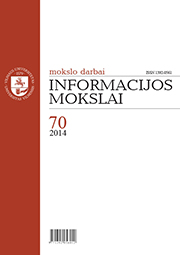PSM – home alone in a narrowcasting era? A case study: the Estonian public broadcasting
PSM – home alone in a narrowcasting era? A case study: the Estonian public broadcasting
Author(s): Andres JõesaarSubject(s): Media studies
Published by: Vilniaus Universiteto Leidykla
Keywords: public service media; Estonian Public Broadcasting; media policy
Summary/Abstract: This article aims at exploring the ways in which the Estonian Public Broadcasting (EPB) tackles challenges of modern public service media (PSM) companies, how different external and internal factors (especially politics, economics, and technology) encourage or hinder the (online) evolution of Estonian Public Broadcasting. Starting with McQuail’s (2010) theoretical framework of media institutions’ influencers, the article investigates how the media policy, economic conditions and technology changes have influenced these processes (Doyle, 2013; Picard, 2011). Also, broadcasters themselves have taken different approaches towards their role in the new media environment (Doyle, 2010; Ranaivoson et al., 2013). Traditional PSM remit should be kept up to date with the demands of information society (Lowe et al., 2014; Bardoel and d’Haenens, 2008). This is a fundamental challenge to the funding and governance of PSM. Market pressure to reduce the PSM funding makes the expansion into online media difficult. However, audiences, especially younger ones, abandon traditional broadcasting channels and are attracted to the online world. This article analyzes different aspects of the the adjustment of Estonian Public Broadcasting with media changes and trends and the outcome of this process. The aim of the research is to give an answer to the question: How do different external and internal factors (especially politics, economics, and technology) encourage or hinder the development of the Estonian Public Broadcasting?
Journal: Informacijos mokslai
- Issue Year: 2014
- Issue No: 70
- Page Range: 69-84
- Page Count: 16
- Language: English

